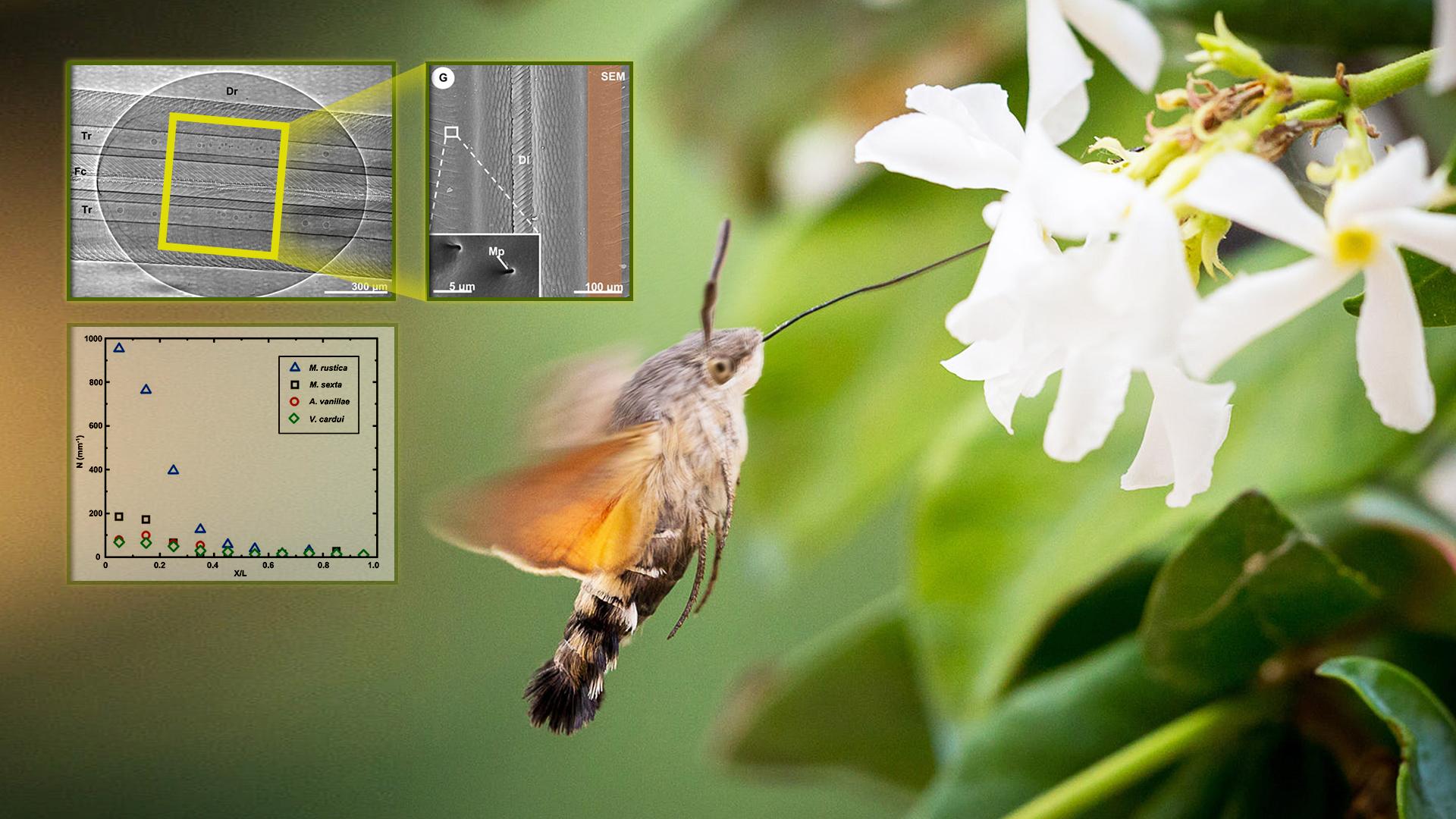Butterflies and moths, or the Lepidoptera, have evolved a proboscis for drinking nectar and pollinating flowers. The large variations in proboscis length, from millimeters to 30 cm, represent the biodiversity of the food sources and insect species. Interest in proboscis evolution and its elongation dates back to Charles Darwin’s successful prediction for the existence of a moth with a proboscis length nearly matching the ~28 cm nectar spur of the Comet orchid, Angraecum sesquipedale (Asparagales: Orchidaceae), the pinnacle example of insect-plant coevolution.

Professor Qi-Huo Wei and Research Assistant Professor Miao Jiang from the Department of Mechanical and Energy Engineering at the Southern University of Science and Technology (SUSTech), together with their collaborator, Professor Matthew Lehnert from Kent State University in the US, have discovered a new respiratory mechanism while studying butterflies and moths.
Their research work, entitled “Adaptations for gas exchange enabled the elongation of lepidopteran proboscises”, has been published in Current Biology.
Lepidoptera’s proboscises of various lengths are an ingenious microfluidic system. A prior study by Prof. Lehnert’s team shows that Lepidoptera’s proboscises cleverly utilize the Rayleigh-Plateau instability to create fluid bridges to dramatically reduce the pressure difference needed to drive liquids through the 100mm-diameter food canals. The large pressure gradients needed for driving a microfluidic system is a challenge often encountered in man-made microfluidic systems.
It has long been believed that insects inhale and exhale respiratory gases through valve-like spiracles on their thorax and abdomen, and transport the respiratory gases via a network of microscopic tracheae throughout the body, which makes it challenging to transport respiratory gases to elongated body parts. Butterflies and moths have two tracheal tubes with a 50-micrometer diameter through their proboscis; an interesting question is how they transport oxygen and carbon dioxide over long distances. The availability of O2 and its transport through the tracheae might be linked to insect body size. The gigantic insects of the Paleozoic Era, for example, might have achieved their sizes because atmospheric O2 levels increased to 35%, in contrast to smaller extant insects and modern O2 levels of 21%.
The researchers studied the proboscis of the moth through X-ray imaging and electron microscopy. They found that the proboscises have a very large number of microscopic pores with a diameter of one micrometer, connecting the tracheal tube with the air, and that oxygen and carbon dioxide are exchanged via these microscopic pores, mainly by diffusion. It was also found that the density of micropores was proportional to the length of the proboscis and proportionate to the volume of the muscles in the proboscis. They also discovered that the insect’s trachea is superhydrophobic, which aids respiration. This is a completely new mechanism of respiratory gas exchange, demonstrating that the physical factor limiting the size of insect body parts is the ability to exchange oxygen and carbon dioxide.
The long proboscis of butterflies and moths is also an ingenious soft actuator and sensor, and future biomimetic research aims to reveal designs and principles for novel biomimetic actuators, sensors, and soft robots.
Research Assistant Professor Miao Jiang is the first author of this paper. Professors Qi-Huo Wei and Matthew Lehnert are the co-corresponding authors.
The research was supported by the Start-Up Fund of SUSTech.
Paper link: https://authors.elsevier.com/c/1hKLc3QW8S2Q~Y.
To read all stories about SUSTech science, subscribe to the monthly SUSTech Newsletter.
Proofread ByAdrian Cremin, Yingying XIA
Photo By